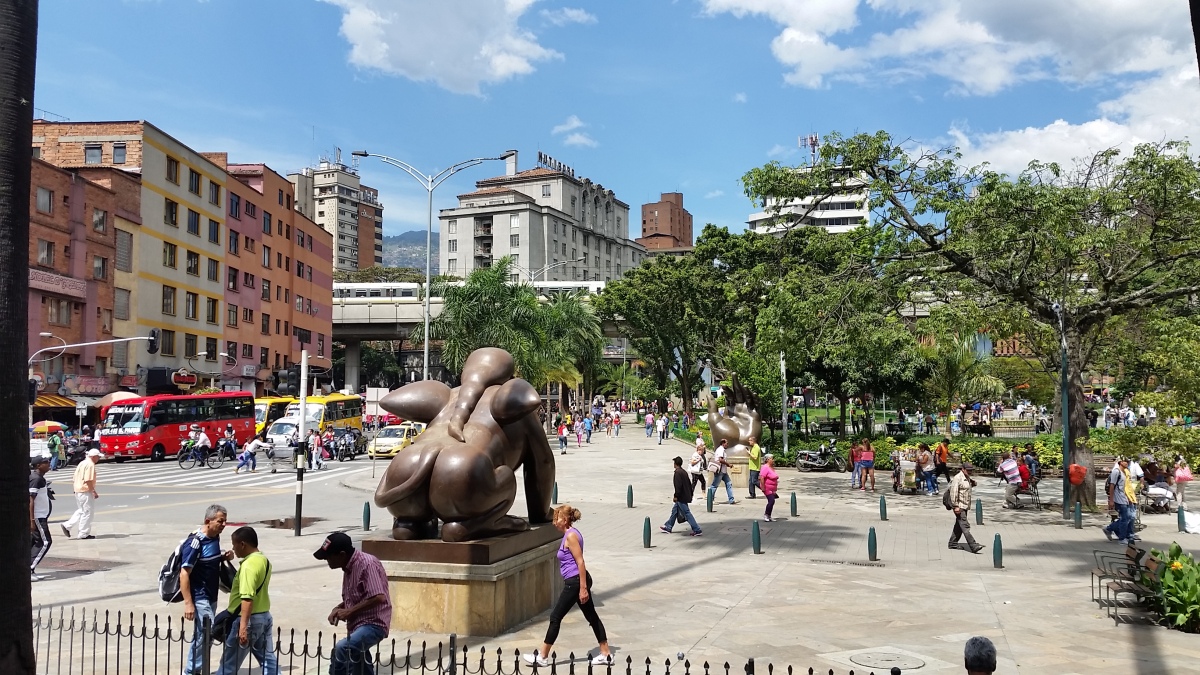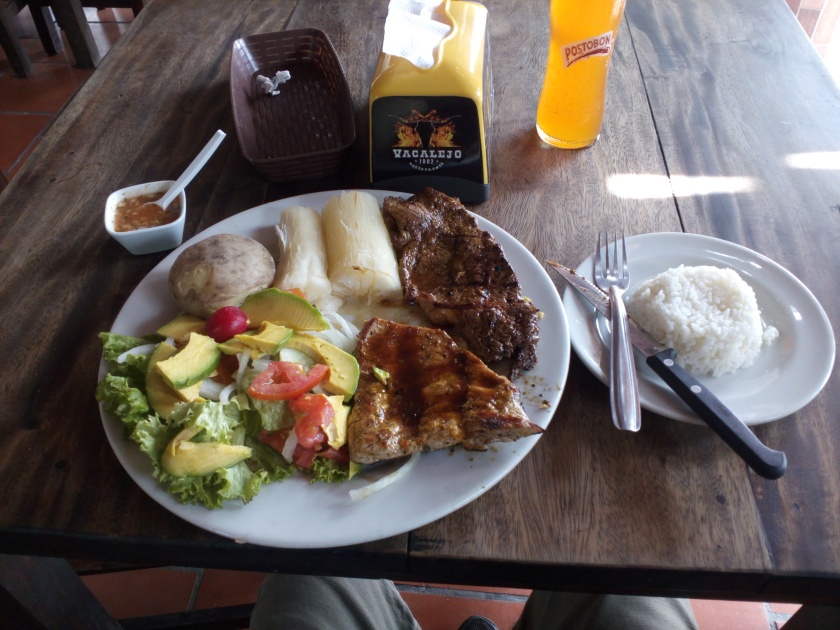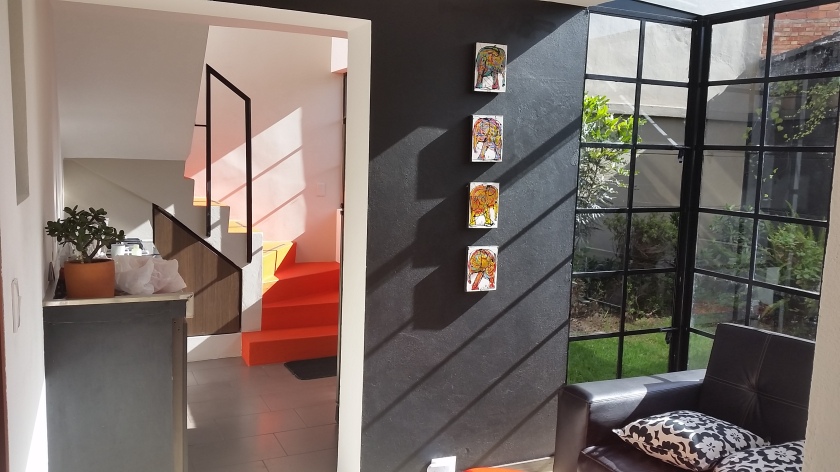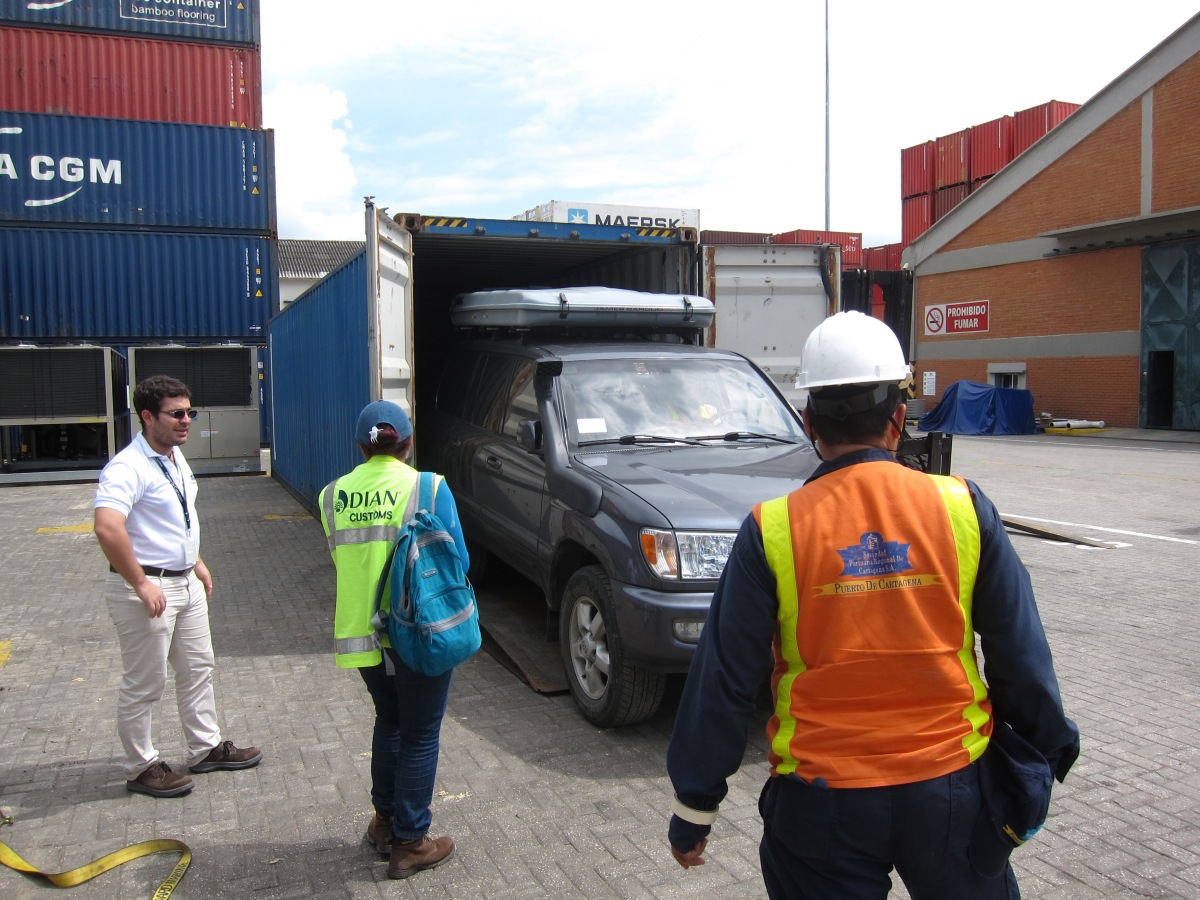The drive down to Cali is pretty uneventful, apart from the numerous tolls. I’m a little envious of motorcycles as they have a special skinny toll free lane at the toll booths.
I’m staying at a hotel for the week, best spot I could find with parking for my Land Cruiser. Lucky I confirmed ahead of time as they have exactly one full sized parking spot inside the gates.
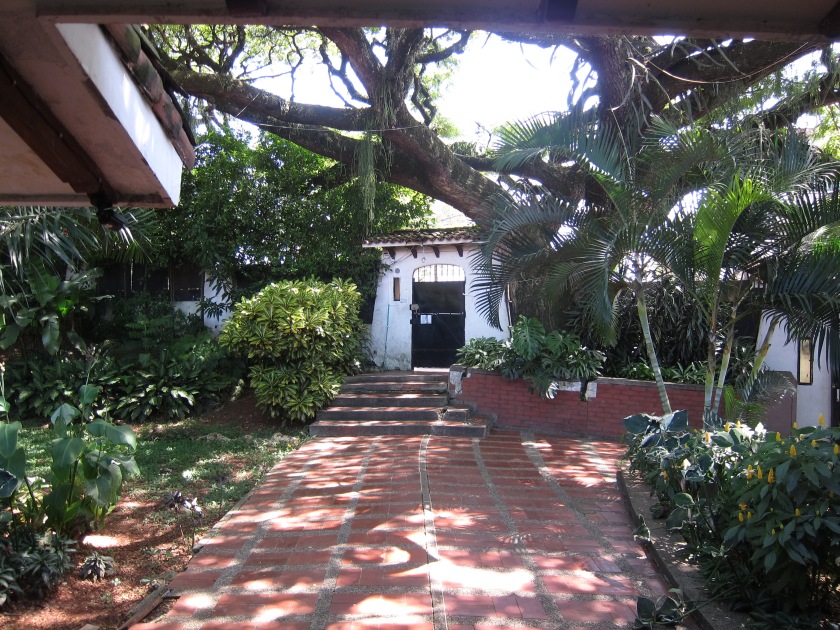
Cali is quite a bit lower in elevation and much warmer. It feels like being in southern California. Plenty of palm trees. I visited the Cali gold museum, which is a subsidiary of the Bogota gold museum.

Not much going on in the downtown area, the Iglesia la Merced dates back to the 16th century. The neighborhood of El Penon is good for walking, plenty of restaurants and little squares to hang out in.
I spent one day at the Cali zoo. It’s small but nicely laid out. One of the most popular exhibits was the Australia zone. I was amused as it contains just about every Australian cliche you can imagine. Except maybe a Crocodile Dundee actor. I always enjoy seeing the tapirs.
From Cali I head south to Popoyan, The White City. Should be obvious how it got its nickname. Great to walk around, the streets and sidewalks even in the very center of town are wide and spacious. It’s a little harder to find restaurants and stores as they are not clustered around the Plaza de Armas (town square) as is usual.
The landmark of Popayan is the Puente del Humilladero. I’m staying at a nice hotel (above) just a couple blocks off the town square. There is no place in town that offers both accommodations and parking for a 2.3m vehicle so I am parked in a lot down the street. It wasn’t until I was leaving on Saturday to head south that I found out that the lot is closed on weekends (this is not uncommon but usually they tell you that when you park). No problem, another couple of days enjoying the town. As with many other Colombian tourist towns, there are plenty of tourists on the weekends but they seem to be mostly Colombians.
Side note: In towns there are two ways to stay at a hotel or hostel with a large vehicle. With my rooftop tent I am 2.3m tall, a standard garage entrance is 2.1m .
Method 1: Find a place ahead of time that can accommodate a 2.3m vehicle, easier said than done in many city centers. (I guess option 3 is stay way outside of the city but that’s no fun). iOverlander is very helpful here. Also on Airbnb I have a standard template that I email to potential hosts stressing just how large and tall my vehicle is. I have had some that still insist that I can fit into a 2.1m garage.
Method 2: Figure out where the central location for lodging, hotels, hostels is. Then find a parking garage nearby, park myself then head out and find a place to stay. This is the best option in places with narrow twisty streets. Usually parking is only a few dollars per night, it’s secured with an attendant during the day and locked up overnight. Once parked I grab my daypack and a duffel bag and look for a place to stay. The only downside is finding that the lot is closed when you’re ready to leave, as above. I’m not the only person this has happened to, it seems like it’s a common thing.
With my Land Cruiser finally freed from the parking lot, I continue south to the border town of Ipiales. It’s a long drive, 333km which takes about 8 hours plus numerous expensive tolls. Ipiales’ claim to fame is the Santuario de las Lajas. In 1754 someone saw an image of the Virgin Mary in a grotto on this site on the side of a canyon, and numerous shrines have been built here ever since. The latest and most ambitious was started in 1916 and completed in 1949. It’s pretty impressive.

The path to the sanctuary goes steeply downhill from the parking lot. Not bad on the way down but at 2950m (9678′) I am huffing and puffing on the way back up. Luckily there are many souvenir and snack shops along the way.

On to Ecuador!


























